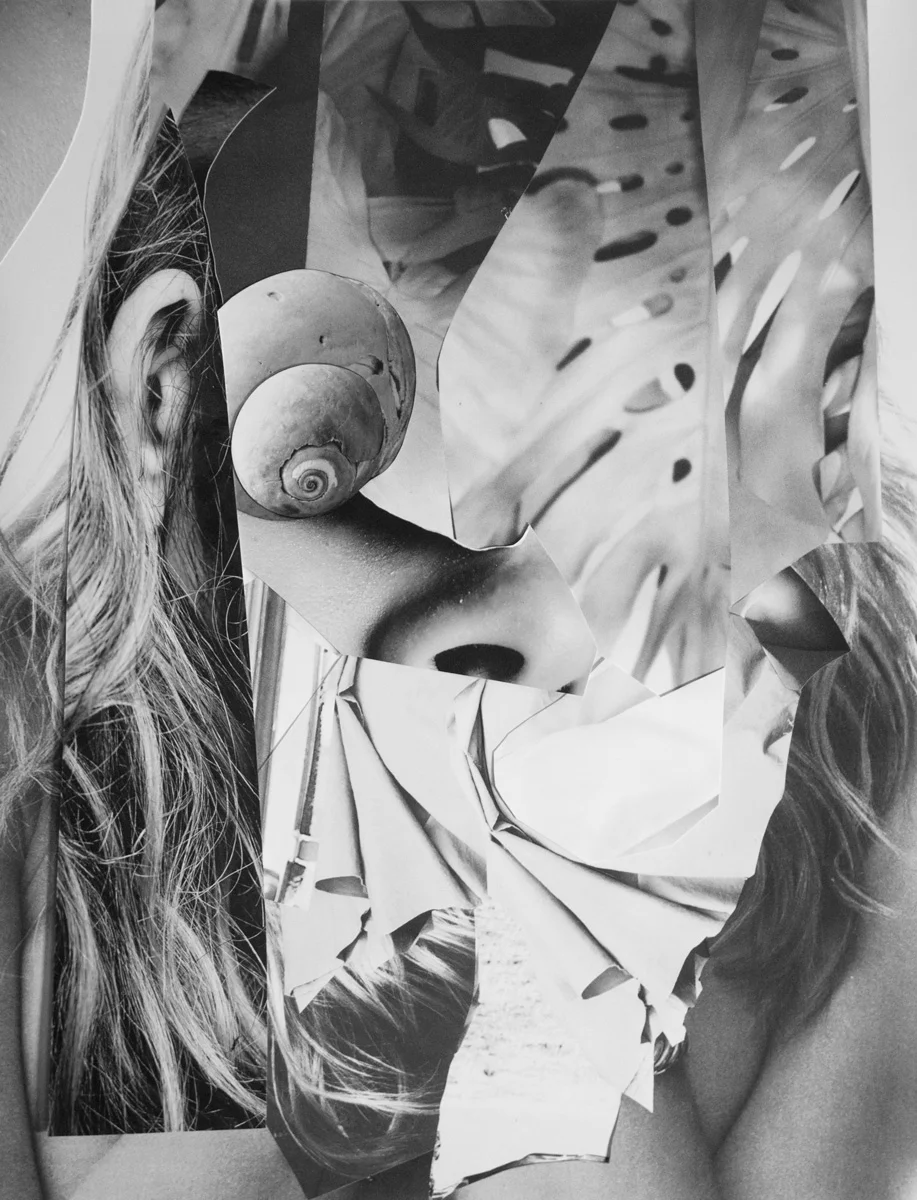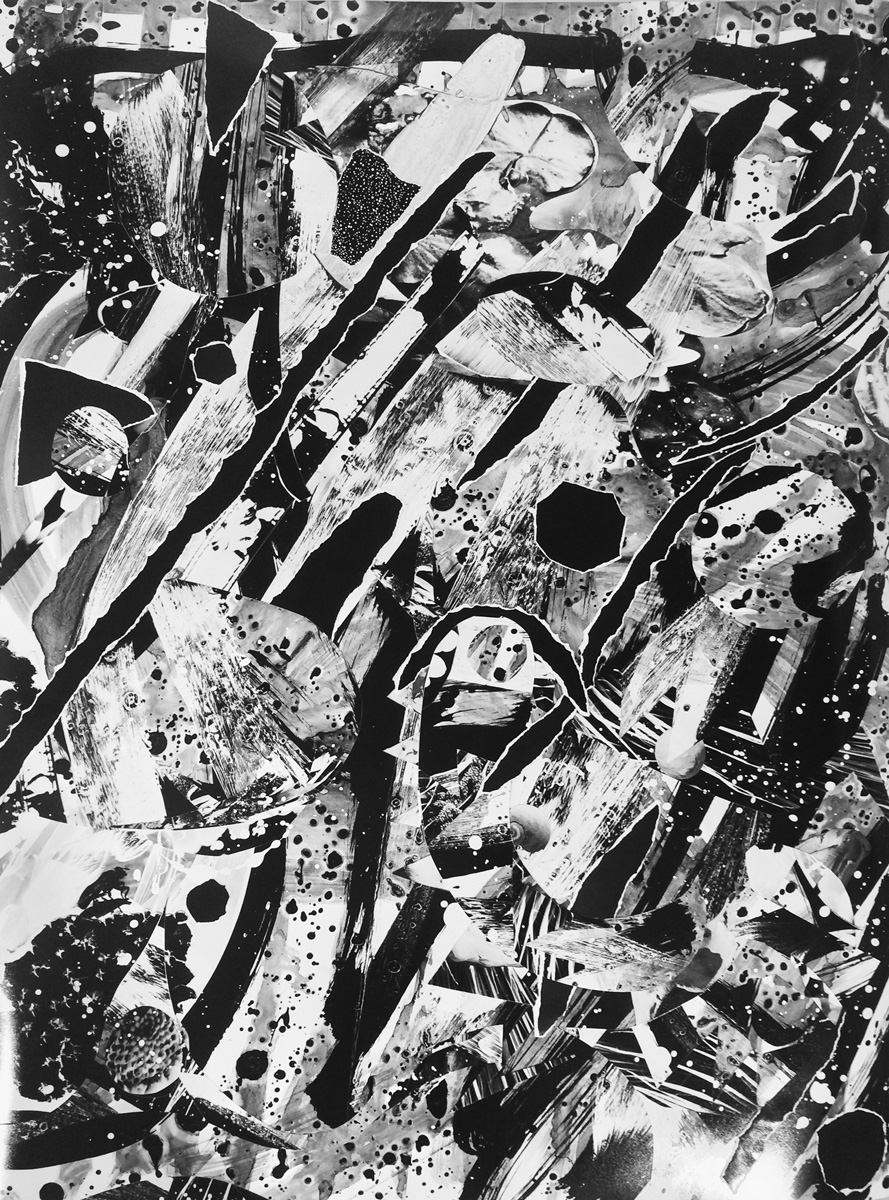
**“Three Women,” (2015). Archival inkjet prints, sumi Ink, and polyvinyl acetate. 17 x 22 inches. Courtesy the artist and MAMA gallery, Los Angeles.**

**“Double Abstraction,” (2015). Archival inkjet prints, sumi ink, and polyvinyl acetate. 30 x 40 inches.** **Courtesy the artist and MAMA gallery, **Los Angeles.****

**“Bow, Hair, Block,” (2015).** **Archival inkjet prints, sumi ink, and polyvinyl acetate. 30 x 40 inches.** **Courtesy the artist and MAMA gallery, **Los Angeles.****
[](#)[](#)
Fay Ray
Every Crevice Has Its Weed
In 2010, LAXART welcomed Fay Ray to the burgeoning global art capital with a provocative, red-flared billboard. This involved double-exposed images that overlaid her naked body with cars. In shooting a nude self-portrait series on film then rolling the film back to shoot automobiles on display at international car shows—she became a reflective combination of flesh and machine, object and image. A native Angeleno, Ray crossed the continent to experience N.Y.C.’s harsher clime and learned that sunlight and warmth encourage her to work.
Since returning, she’s found fertile soil in and among respected L.A. institutions—including LAXART and LACMA—and assisted Los Angeles luminary John Baldessari. Ray’s pieces live in a feminine space, contemplating the use of female imagery and construction in the media. From a collection of feminine attributes that float disconnectedly in “Three Women”—a woman’s hair, ear, nose, and tropical plants—to “Bow, Hair, Block” where cinder blocks, chains, and hair bows exist in friendly opposition to one another. Her resistance forms a new intelligence, not only confronting the space it creates, but redefining space as resistant.
#### **_Do you consider yourself an iconoclast?_**
#### I do, especially in the sense that I take issue with the way women are used to market products and the way they are represented in the media. I think a lot of women have a hard time squaring what they are told to be and buy in relationship to who they are and what they want. The complexities of this contrast activate my work. One of my biggest challenges in the studio is to be more aggressive with my approach to the commodified and understood representations of women because the urge to want to see myself reflected in the images is so strong. I find the whole relationship extremely nuanced and changing.
#### **_Your work often takes feminine concepts and presents them in a hard or industrial way—to what extent is this is a comment on feminism, and to what extent is it a representation of how you see yourself and the women around you?_**
#### My collage work is an honest representation of how I understand women to be portrayed and my own personal relationship to those images at the time when it is made. As I make more, I learn more about what is coming through the works subconsciously and what is necessary in the work. For instance, my use of high contrast black and white images.
#### That is essential because it emphasizes the dualities women are often asked to live by and the narrow choices we are allowed.
#### **_What aspects of Los Angeles influence your work? Could you see yourself making art anywhere else, and what would it look like?_**
#### Jan Avgikos once said, “Artists are like weeds, they can work anywhere.” When I heard that it reinforced that I was part of a tribe of people that need to make art to live, and they will do so one way or another wherever they are or die.
